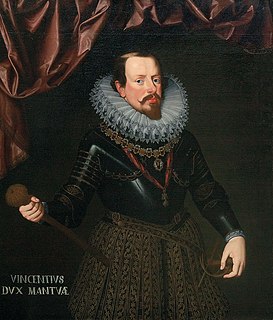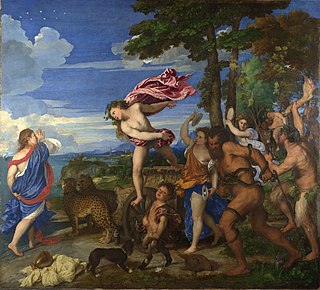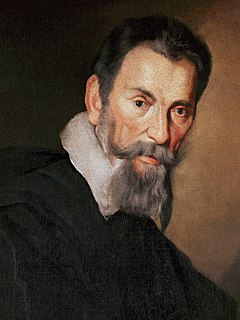Related Research Articles

Claudio Giovanni Antonio Monteverdi was an Italian composer, string player, choirmaster, and priest. A composer of both secular and sacred music, and a pioneer in the development of opera, he is considered a crucial transitional figure between the Renaissance and Baroque periods of music history.
Hans Ferdinand Redlich was an Austrian classical composer, conductor, musicologist and writer.

A madrigal is a secular vocal music composition of the Renaissance and early Baroque (1600–1750) eras. The polyphonic madrigal is unaccompanied, and the number of voices varies from two to eight, but usually features three to six voices, whilst the metre of the madrigal varied between two or three tercets, followed by one or two couplets. Unlike the verse-repeating strophic forms sung to the same music, most madrigals were through-composed, featuring different music for each stanza of lyrics, whereby the composer expresses the emotions contained in each line and in single words of the poem being sung.
The year 1607 in music involved some significant events.

L'Orfeo, sometimes called La favola d'Orfeo[la ˈfaːvola dorˈfɛːo], is a late Renaissance/early Baroque favola in musica, or opera, by Claudio Monteverdi, with a libretto by Alessandro Striggio. It is based on the Greek legend of Orpheus, and tells the story of his descent to Hades and his fruitless attempt to bring his dead bride Eurydice back to the living world. It was written in 1607 for a court performance during the annual Carnival at Mantua. While Jacopo Peri's Dafne is generally recognised as the first work in the opera genre, and the earliest surviving opera is Peri's Euridice, L'Orfeo is the earliest that is still regularly performed.

Giulio Romolo Caccini was an Italian composer, teacher, singer, instrumentalist and writer of the late Renaissance and early Baroque eras. He was one of the founders of the genre of opera, and one of the most influential creators of the new Baroque style. He was also the father of the composer Francesca Caccini and the singer Settimia Caccini.
Alessandro Striggio was an Italian composer, instrumentalist and diplomat of the Renaissance. He composed numerous madrigals as well as dramatic music, and by combining the two, became the inventor of madrigal comedy. His son, also named Alessandro Striggio, wrote the libretto for Monteverdi's Orfeo.

Il ritorno d'Ulisse in patria is an opera consisting of a prologue and five acts, set by Claudio Monteverdi to a libretto by Giacomo Badoaro. The opera was first performed at the Teatro Santi Giovanni e Paolo in Venice during the 1639–1640 carnival season. The story, taken from the second half of Homer's Odyssey, tells how constancy and virtue are ultimately rewarded, treachery and deception overcome. After his long journey home from the Trojan Wars Ulisse, king of Ithaca, finally returns to his kingdom where he finds that a trio of villainous suitors are importuning his faithful queen, Penelope. With the assistance of the gods, his son Telemaco and a staunch friend Eumete, Ulisse vanquishes the suitors and recovers his kingdom.

L'incoronazione di Poppea is an Italian opera by Claudio Monteverdi. It was Monteverdi's last opera, with a libretto by Giovanni Francesco Busenello, and was first performed at the Teatro Santi Giovanni e Paolo in Venice during the 1643 carnival season. One of the first operas to use historical events and people, it describes how Poppaea, mistress of the Roman emperor Nero, is able to achieve her ambition and be crowned empress. The opera was revived in Naples in 1651, but was then neglected until the rediscovery of the score in 1888, after which it became the subject of scholarly attention in the late 19th and early 20th centuries. Since the 1960s, the opera has been performed and recorded many times.

Vincenzo Ι Gonzaga was ruler of the Duchy of Mantua and the Duchy of Montferrat from 1587 to 1612.

Giulio Strozzi was a Venetian poet and libretto writer. His libretti were put to music by composers like Claudio Monteverdi, Francesco Cavalli, Francesco Manelli, and Francesco Sacrati. He sometimes used the pseudonym Luigi Zorzisto.

The concerto delle donne was a group of professional female singers in the late Renaissance court of Ferrara, Italy, renowned for their technical and artistic virtuosity. The ensemble was founded by Alfonso II, Duke of Ferrara, in 1580 and was active until the court was dissolved in 1597. Giacomo Vincenti, a music publisher, praised the women as "virtuose giovani", echoing the sentiments of contemporaneous diarists and commentators.

L'Arianna is the lost second opera by Italian composer Claudio Monteverdi. One of the earliest operas in general, it was composed in 1607–1608 and first performed on 28 May 1608, as part of the musical festivities for a royal wedding at the court of Duke Vincenzo Gonzaga in Mantua. All the music is lost apart from the extended recitative known as "Lamento d'Arianna". The libretto, which survives complete, was written in eight scenes by Ottavio Rinuccini, who used Ovid's Heroides and other classical sources to relate the story of Ariadne's abandonment by Theseus on the island of Naxos and her subsequent elevation as bride to the god Bacchus.

Giovanni Francesco Busenello was an Italian lawyer, librettist and poet of the 17th century.
These lists show the audio and visual recordings of the opera L'Orfeo by Claudio Monteverdi. The opera was first performed in Mantua in 1607, at the court of Duke Vincenzo Gonzaga, and is one of the earliest of all operas. The first recording of L'Orfeo was issued in 1939, a freely adapted version of Monteverdi's music edited by Giacomo Benvenuti, given by the orchestra of La Scala Milan conducted by Ferrucio Calusio. In 1949 the Berlin Radio Orchestra under Helmut Koch recorded the complete opera, on long-playing records (LPs). The advent of LP recordings was, as Harold Schonberg later wrote, an important factor in the postwar revival of interest in Renaissance and Baroque music, and from the mid-1950s recordings of L'Orfeo have been issued on many labels. Koch's landmark version was reissued in 1962, when it was compared unfavourably with others that had by then been issued. The 1969 recording by Nicholas Harnoncourt and the Vienna Concentus Musicus, using Harnoncourt's edition based on period instruments, was praised for "making Monteverdi's music sound something like the way he imagined". In 1981 Siegfried Heinrich, with the Early Music Studio of the Hesse Chamber Orchestra, recorded a version which re-created the original Striggio libretto ending, adding music from Monteverdi's 1616 ballet Tirsi e Clori for the Bacchante scenes. Among more recent recordings, that of Emmanuelle Haïm has been praised for its dramatic effect. The 21st century has seen the issue of an increasing number of recordings on DVD.
Giovanni Maria Bacchini was an Italian castrato, composer, writer on music, and Roman Catholic priest who flourished during the late 16th century and early 17th century.

The Italian composer Claudio Monteverdi (1567–1643), in addition to a large output of church music and madrigals, wrote prolifically for the stage. His theatrical works were written between 1604 and 1643 and included operas, of which three—L'Orfeo (1607), Il ritorno d'Ulisse in patria (1640) and L'incoronazione di Poppea (1643)—have survived with their music and librettos intact. In the case of the other seven operas, the music has disappeared almost entirely, although some of the librettos exist. The loss of these works, written during a critical period of early opera history, has been much regretted by commentators and musicologists.
Caterina Martinelli was an Italian opera singer, who was employed by Duke Vincenzo I of Mantua from 1603 until her death in 1608.
References
- ↑ Fenlon, "The Mantuan Orfeo" pp. 11–15
- ↑ Redlich, p. 15
- ↑ Tim Carter (2008). Giovanni Gualberto Magli. The Grove Book of Opera Singers. ISBN 9780195337655.